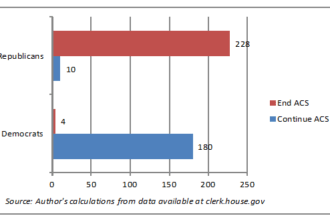Data analysis. What’s the point of it? Your first reaction might be to scoff at, or dismiss this question as rhetorical, perhaps pointless. But answer it anyway.
Data analysis. What’s the point of it? Your first reaction might be to scoff at, or dismiss this question as rhetorical, perhaps pointless. But answer it anyway.
We analyze data to gain a clearer picture. To understand what raw quantitative masses of information mean – how it relates to, and impacts upon, real-world activities. In the enterprise, we use data analysis to uncover trends and manage processes, to gain an up-to-date ‘360-degree view’ of critical business functions. We then apply that knowledge to underpin prudent, timely, accurate and vital decision-making.
But how do we convey the results of this valuable data analysis? How do you unlock its potential power? We use Business Intelligence (BI). We then consume and share this analysis through data visualization.
If the point of collecting, collating and ultimately analyzing data is to help make better decisions, it can be successfully and definitively argued that the success of any business analytics initiative resides in the quality and aptness of the visual representation of organizational data assets.
So what happens when data visualization fails to communicate the right information in the right way?
Data visualizations: When only the most appropriate, not the ‘best’, will do
In a recent blog post – Business Intelligence: Intuitive vs cool data visualization and infographics – we discussed data visualizations in the context of appearance and appropriateness. The conclusion was that, due to a plethora of contributing factors, including vendor hype and increased business-user contribution in the purchase decision, many BI or data analysis tools are now purchased for their aesthetic appeal (pretty shapes and colors), rather than their ability to most effectively deliver the best business insights.
Not only can this modern addiction to the sleek and sometimes superficial affect the initial purchase decision, this mindset can place corporate data analysis in a long-term straitjacket. Users of all types will be tempted to dazzle colleagues and clients with impressive looking 3D multi-pie charts and animated graphs to the detriment of the data analysis – The chart, rather than the data, becomes the star of the show. For best practice data analysis, the visualization of that data should only support and facilitate understanding, never distract or detract from it.
As noted in the aforementioned blog post, the 2002 publication, Information Visualization in Data Mining and Knowledge Discovery, laments that: “Data visualization has lagged its sister disciplines of data capture, data storage, data analysis, and knowledge discovery… there is still a huge gap between our ability to extract answers and our ability to present the information in meaningful ways.”
The book goes on to define the principle function of data visualization in stark, uncompromising terms:
“Visualization, well done, harnesses the perceptual capabilities of humans to provide visual insight into data… (it is) fundamentally about data reduction… Finding a view or projection of the data that reduces complexity while capturing important information.
“A successful visualization is one that emphasizes the information of interest and presents it at a resolution sufficient to perform the task.”
We asked whether most visualizations of corporate data lived up to this unwavering, heady definition. Unfortunately, the answer was a fairly resounding no.
Effective data visualization rules
So how can you ensure that you select the best visualizations to expose the value in your data sets?
Just remember this shortlist of data analysis and data visualization best practices when selecting and assessing a BI solution, or when selecting which chart type to use for your next report or dashboard:
- Ensure that the visualizations add to the effective interpretation and explanation of the underlying data – can you understand the communicated information without undue strain?
- Ensure the visualizations enable the effective detection of trends that can be easily connected to real world events to help explain relationships and interrelationships
- Color is critical: Use it appropriately and minimally to maximize its impact
- Ensure the visualization chosen helps position the report or dashboard as a piece of consumable communication – it must convey a clear, relevant idea/message
- Keep the audience and their intended application of the data analysis top-of-mind – chart types should be selected for purpose, not just appeal
- Display numbers in textual form whenever possible
- Choose the most basic visualization available that can effectively convey the intended message. Research demonstrates that the more visual objects the human brain has to interpret within a chart, the harder it is to derive clear meaning from it
- Follow the advice of Edward Tufte in his renowned The Visual Display of Quantitative Information: Remove anything that isn’t absolutely central to the interpretation of the data. Only display objects which are vital to the accurate interpretation and contextual understanding of the underlying data – avoid all design aspects that are unconnected to the task of analytic communication (Yes, avoid those abovementioned 3D multi-pie charts whenever possible)
- Avoid the use of tables for data comparison and beware of redundant gridlines – they distract the eye
- Moving features are good and bad. They grasp the attention of users, but if too overt, can distract from other important information. So stick to the basics, such as minimalist roll-overs or pop-ups
The key to effective data visualization, analysis and deeper insights? Make it easy by keeping it simple
The key to an effective BI program is sustained widespread user-adoption. Why? Because widespread user-adoption enables you to derive value from the project and realize superior Return on Investment (ROI). High levels of sustainable user-adoption are achieved by making BI easy – easy-to-use, consume and deliver to end-users. The product must make it easier for users of all types to perform their daily and strategic job functions. Good data visualizations achieve this by making data interpretation quick and easy, delivering deeper, better business insights. Poor data visualizations, that are misleading and turn data interpretation into a burdensome process, result in user drop-off, misunderstandings, less accurate and timely results, and failed ROI.
When considering data visualization best practices, just think of the founding American computer scientist, Calvin Northrup Mooers, and his famous Mooers’ Law of 1959:
“An information retrieval system will tend not to be used whenever it is more painful and troublesome for a customer to have information than for him not to have it.
“Where an information retrieval system tends not to be used, a more capable information retrieval system may tend to be used even less.” What good is something (or ANYTHING for that matter) if you’re not using it?
Also, take heed of the irreverent modern-day data visualization expert and aficionado, Stephen Few, and his philosophy espoused in Information Dashboard Design: The Effective Visual Communication of Data:
“An effective dashboard [or report] is the product not of cute gauges, meters, and traffic lights, but rather of informed design: more science than art, more simplicity than dazzle. It is, above all else, about communication.”
Poor data visualization leads to user frustration, misuse, abuse, distrust, and ultimately, abandonment. Great data analysis, through highly intuitive data visualizations, leads to satisfied, active and informed users, and remarkable ROI.









